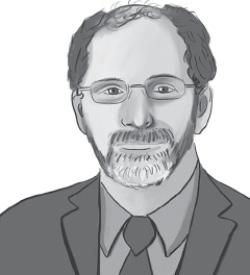Clean Energy Subsidies Enable More Ambitious Clean Air Rules

The climate change policy landscape is often characterized by multiple overlapping subsidies and regulations to drive emission reductions. Economists have long criticized such a belt-and-suspenders approach to policy as reducing cost-effectiveness and rewarding politically connected interests. However, a well-designed strategy of combined policies may complement each other to drive innovation and clean energy investment. This spring, EPA issued two regulations setting greenhouse gas emission standards for power plants and vehicles that illustrate the influence of Inflation Reduction Act subsidies on regulatory ambition.
In its final rule addressing power plant GHGs, the agency indicates how the IRA informed its determination that carbon capture and storage, or CCS, represents the “best system of emission reduction” under the Clean Air Act for existing coal-fired power plants and oil-and-gas steam-turbine plants. By subsidizing CCS technology, the IRA lowers the effective price tag for current adopters and, by spurring near-term adoption and potential learning-by-doing among early adopters, the law could enable costs to fall over time.
The requirements for installing CCS technology begin to bind in 2030 or 2032, depending on whether an operator intends to run a given plant beyond 2039. The timing of the regulatory compliance deadlines overlaps briefly with the IRA tax credits and serves to extend policy support for CCS technology well beyond the 2033 tax credit expiration under current law.
The effective sequencing of the tax credit and the regulation results in a reinforcing dynamic. The regulatory requirements in the 2030s enhance the incentive to take advantage of the tax credit for existing power plants in the 2020s. The prospect of broader tax credit-induced deployment of CCS in the 2020s increases the likelihood of compliance with, and the political durability of, the emissions standards. For innovators and entrepreneurs, the sequencing of subsidies and regulations signals long-term, predictable policy support for bringing CCS to market.
To be clear, combining an environmental regulation and a tax credit does not automatically increase energy production or reduce emissions. For example, the volumetric-ethanol excise tax credit and the renewable-fuel standard operated contemporaneously over 2006-11. The RFS mandated demand and the tax credit subsidized supply of ethanol. Most analysts at the time noted that the tax credit did not increase supply beyond the RFS-mandated quantities for corn ethanol. The tax credit primarily supported corn ethanol that had quite modest environmental and carbon dioxide benefits relative to petroleum-based motor vehicle fuel. Moreover, the tax credit did not favor innovation, such as using low-emissions cellulosic ethanol.
This spring, EPA also set new standards for light-duty-vehicle greenhouse gas emission standards for the 2027 through 2032 model years, which overlaps with the final five years of the electric vehicle tax credit under the IRA. While the 2023 U.S. electric vehicle market share was about 8 percent, EPA projects EVs to represent 30 to 56 percent of new light-duty-vehicle sales over 2030-32. Much of this increase reflects expected impacts of tax credits on EV market growth, but automakers complying with the regulation will likely supply more EVs to the market than they would under the subsidies alone.
At first blush, this may resemble the preceding case on ethanol policy, but there are some key differences. The subsidies for electric vehicles will likely promote innovation in the batteries that enable zero-emission vehicles. This stands in contrast to the ethanol tax credit, which did not spur clean energy innovation. Given the experience during the Trump administration, when EPA and the Department of Transportation weakened vehicle emissions and fuel-economy standards, leveraging greater adoption of electric vehicles through subsidies and regulations may enhance the political durability of a zero-emission transportation system.
Indeed, the best analogue may be a combination of policies announced in 2015: extensions of renewable power tax credits and EPA’s power-sector greenhouse gas regulation, the Clean Power Plan. This rule never took effect and its approach was struck down in the Supreme Court’s 2022 West Virginia v. EPA decision. The lengthy extension of renewable-power tax credits in the 2015 omnibus tax and spending bill, however, served as a form of insurance policy against legal challenges to the rule. With subsidized wind and solar generation, U.S. power-sector emissions fell faster than envisioned under the Clean Power Plan.
Careful policy design can be achieved through a belt-and-suspenders approach. Thoughtful sequencing of subsidies and regulations over time and using one type of policy as insurance for the other can accelerate the clean energy transition.
Clean Energy Subsidies Enable More Ambitious Clean Air Rules.








